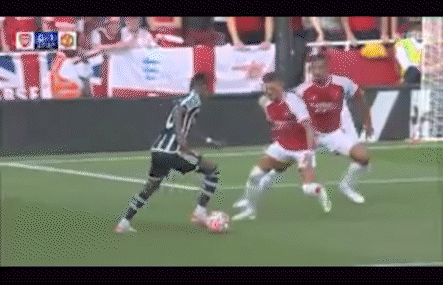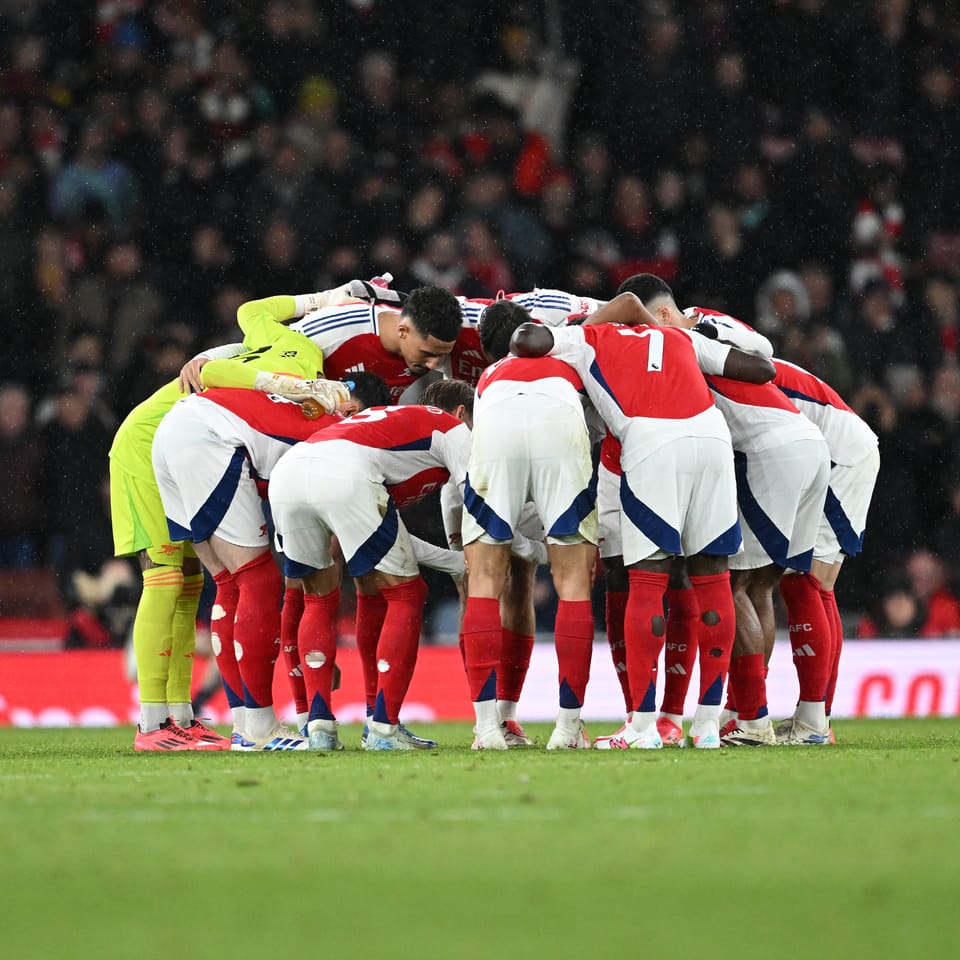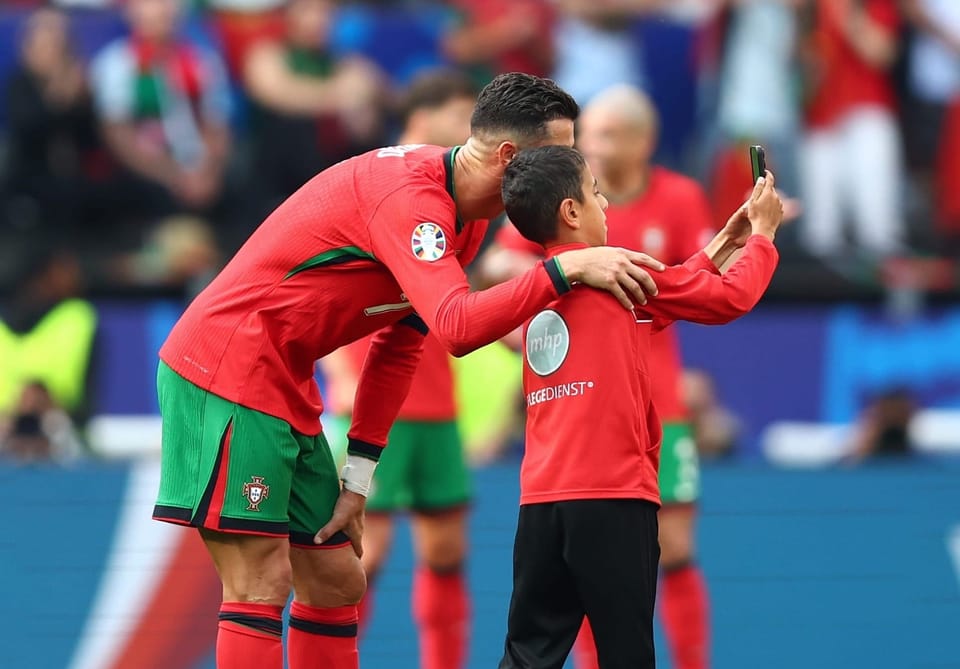Reverse-Engineering: How Players and Teams Poke Football's Margins
Football evolves. How do we stay ahead?

Football evolves.
Winning strategies change; recruitment trends and player development curriculums follow. The Laws of the Game change; players adapt their mechanics to stay aligned.
This evolution takes two forms:
- Practical: The manifestation of tactics via players' actions and mechanics on the pitch.
- Ideological: Across an entire tactical approach or game-model.
Contemplating this evolution is stimulating, yet the crucial, margin-splitting question remains: How can we anticipate and prepare for these changes?
When the media cover some brilliant innovation, it’s no longer novel.
— Joel A. A. (@joeladejola) January 8, 2024
A few actors already dug in, reaped the margins, and sowed foundations to keep them ahead.
That’s why they’re comfortable accepting — or even offering — interviews.
Mimicry can’t usurp them.
Until now, I've never synthesised my thoughts on this topic. Let's consolidate them in this piece.
The Blueprint
In player development, the blueprint of success isn’t about merely replicating the greats. It’s about studying them: breaking down elite teams to understand the ‘why’ behind their strategies, the ‘how’ of their implementations, and ultimately crafting a bespoke plan.
The process unfolds as follows:
- Deconstruct or reverse-engineer current successful strategies to their fundamental concepts.
- Identify weaknesses and areas for improvement.
- Apply these refined insights to develop a novel strategy or product.

This approach, pivotal in developing novel, groundbreaking tactics in football, mirrors methods employed across various fields.
Let's take a few case-studies – I love a good case-study.
I'd previously remarked that “superior talent development [for forwards] leverages the homogenous mechanics of academy-trained defenders & goalkeepers to fine-tune offensive talent.”
We study the backline and say, "This is how they are trained to block. Here's how [our strikers] might exploit it."
Reverse-engineering in football.
Lee Grant, Ipswich Town
Former Manchester United goalkeeper Lee Grant and current finishing – yes you heard that right – coach at Ipswich Town is is one player who has reconciled this approach recently.
Here are his words from an interview with Mirror in March 2023:
“Across 20 odd years of being in goal and conceding so many goals, I can remember so many so vividly. They are etched into my mind and psyche.
"I use that to help guide the forward players occasionally, for the sorts of outcomes that no goalkeeper would like. We talk about foot patterns, how quickly we can get shots off, arriving onto the ball as quickly as possible, shortening steps.
“I like it when our strikers are dictating to the goalkeepers. I enjoy it when we’re the ones leading the dance. If I think back to myself between the sticks, that was probably where I felt most vulnerable, when a striker had that real clarity about what they were trying to achieve and were able to do it with speed and precision.”
A crucial man behind the striking force that scored the most goals in English leagues last season for Ipswich was vastly experienced GK, Lee Grant who's working as FWD's coach.
— ' (@ftblnatt) August 24, 2023
Key points:
🔸foot patterns
🔹shortening steps
🔸Combating GK's mindsets
🔹clarity, speed & precision pic.twitter.com/ZQ0GKyyvUt
For Grant, his experience as a goalkeeper has allowed him offer forwards a new perspective on finishing. His insights into the vulnerabilities he felt in goal become strategic advantages for strikers, emphasizing quickness, precision, and psychological dominance.
Again, reverse engineering.
Marcus Rashford, Arsenal Defenders.
Here's another evidence of the homogenised mechanics of formally-trained defenders:
Remember White & Saliba were developed in different countries yet are predisposed to the same, remarkably synchronised blocking mechanics.

Let's briefly break it down:
- Rashford hunkers down, seemingly poised to shoot, but stutters, which lures an extended lunge from the Arsenal defenders.
- Their exertion in that move grants Rashford an extra second to pummel the shot past.
The Arsenal defenders demonstrate commendable athleticism and defensive aptitude. Against most attackers, or in another instance, it would be enough to get a block in.
However, Rashford's execution highlights the opportunity for forwards to recognise and poke the defensive margins in specific situations. He baits the defenders' (now) instinctive movements, creating the perfect moment to execute his shot.
So far, we've discussed the practical, what about the ideological?
Redefining Strategy with Counter-play
At the heart of every tactical redefinition lies the concept of counterstrategy. We need to ask:
- What tactical principles dominate today’s top teams?
- How can these tactics be neutralised?
- What player profiles or principles will become invaluable in executing such counter-tactics?
This adaptive mindset is evident in the progression of football’s tactical landscape:
- Barcelona once dazzled with tiki-taka that prized possession.
- Jurgen Klopp’s gegenpressing emerged as a counter, valuing proactive pressing to regain the ball.
- Recently, we've seen De Zerbi implement intricate funnel-buildups to bait and exploit their opponents' aggressive press.
What next? Appreciation for strong ball-carriers in deeper positions. More mid-blocks.
Crafting Tomorrow’s Football Today
Somewhere, perhaps in a nondescript building, the future of football is being conceptualised. The brightest footballing minds in top academies are not just studying the present; they’re reverse engineering it. They are predicting, planning, and preparing for tomorrow's meta.
Scouts, in this transformative phase, are on the hunt for fresh, tailored player profiles that fit the evolving requirements.
Development coaches are sharpening their tools and honing counter-strategies to stay ahead.
Laws of the Game
It's important to note that these defensive mechanics do change – but primarily in response to (changes in) the laws-of-the-game.
Some years ago, pre-VAR and strict hand-ball rules, defenders weren't aggressively tucking their hands when defending around the box.
Because:
- The laws-of-the-game largely define defensive mechanics.
- The laws-of-the-game are subject to little, often insignificant, changes on a year-to-year basis.
Parting thought:
With seasonal alterations to the laws-of-the-game & unrelenting evolution of the team-tactics, the margin to successfully phase-implement any specific game-model is tiny.
— Joel A. A. (@joeladejola) October 19, 2023
Teams that prioritise generalists and tomorrow's specialist (meta) profiles do so to increase the margin.
A similar, less robust version of this article was first published by the writer in August 2023.
What Next?
If you enjoyed this, consider subscribing to BallerzBantz, following us on Twitter, and sharing this with someone. We're publishing one bite-sized analysis + solution daily. By subscribing, you will receive one synopsis each week.
Join us to stay ahead and contribute to this burgeoning community.
Who is the Writer?
Joel A. Adejola is an undergraduate at the University of Kansas (KU), studying Engineering and Philosophy.



